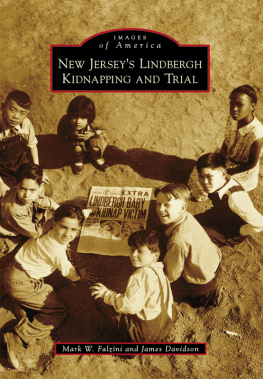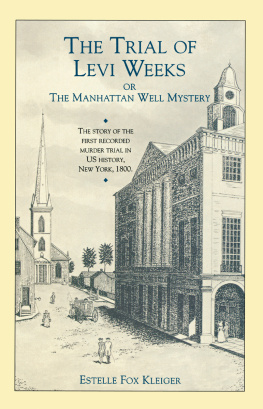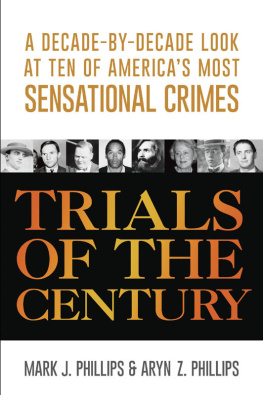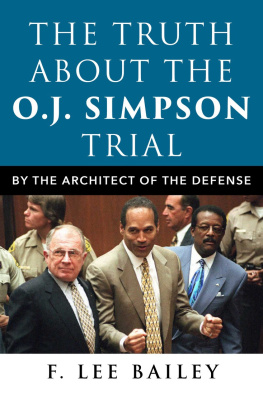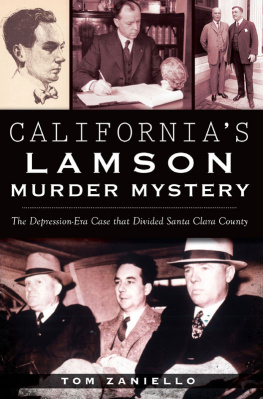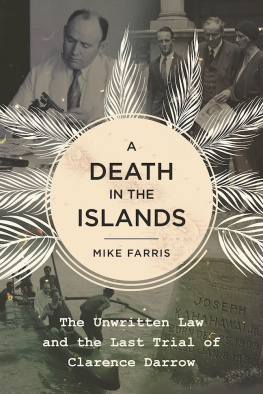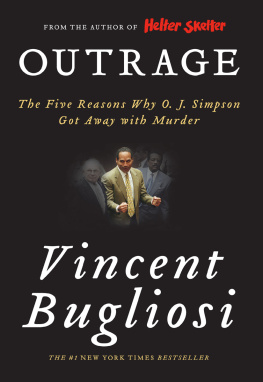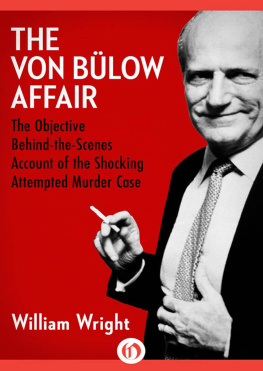Holly Metz not only opens wide a window on a fascinating epoch in American history but also sheds light on the bitter class enmity that continues to plague us today.
Anthony DePalma, author of City of Dust and The Man Who Invented Fidel
Rigorously researched and vividly recounted, this history of the death of a Hoboken poormaster in the 1930s brings back a time, not unlike today, when a corrupt welfare system made poverty a crime, pushing honest citizens to extremes in their efforts to survive.
Fred Gardaphe, Distinguished Professor, Queens College/ CUNY, and author of From Wiseguys to Wise Men
In Killing the Poormaster, Holly Metz takes an overlooked piece of history and uses it as a lens to reveal an entire era. An engrossing and worthwhile piece of work.
Steven Hart, author of The Last Three Miles: Politics, Murder, and the Construction of Americas First Superhighway
This is a well-researched, engrossingly written book that in winning fashion tells a tale that needed to be told, and although unfortunately long overlooked has found a splendid chronicler in Holly Metz.
Daniel J. Leab, Professor of History, Seton Hall University

For more information, visit www.thepoormaster.com
Copyright 2012 by Holly Metz
All rights reserved
Published by Lawrence Hill Books
An imprint of Chicago Review Press, Incorporated
814 North Franklin Street
Chicago, Illinois 60610
ISBN 978-1-61374-418-5
Library of Congress Cataloging-in-Publication Data
Metz, Holly.
Killing the poormaster : a saga of poverty, corruption, and murder in the Great Depression / Holly Metz.
p. cm.
Includes bibliographical references and index.
ISBN 978-1-61374-418-5
1. MurderNew JerseyHobokenCase studies. 2. PoorNew JerseySocial conditions20th century. 3. United StatesSocial conditions1933-1945. I. Title.
HV6534.H63M48 2012
364.1523092dc23
2012021790
Interior design: PerfecType, Nashville, TN
Printed in the United States of America
5 4 3 2 1
For my parents,
who met these hard times
across the river.
CONTENTS
H OBOKEN , N EW J ERSEY , 1938
This map was produced by the Federal Writers Project of the Works Progress Administration for the State of New Jersey. It has been modified to include locations mentioned in Killing the Poormaster and to indicate the citys division between uptown (east of Willow Avenue) and downtown (west of Willow Avenue) prior to and during the Great Depression.
1. City hall, the Hall
94 Washington Street, headquarters of the poormaster, mayor, police, and the Recorders Court (the municipal court.)
2. Jersey Observer
111 Newark Street, newspaper with a cozy connection to the Hall.
3. Home of Joseph Scutellaro
611 Monroe Street, home of the man accused of killing the poormaster.
4. Apartment of Herman Matson
812 Willow Avenue
5. Apartment of the Hastie family
1203 Willow Avenue
6. Volk Mortuary
631 Washington Street, where the poormasters funeral was held.
7. Church Square Park
Where Herman Matson held his first public meeting.
8. Hudson Square Park
Where Herman Matson attempted to hold a second open-air meeting.
9. Pier at the east end of Fifth Street
From which longshoremen descended into Hudson Square Park during Matsons second meeting.
Map layout by Rose Daniels Design; original map 1939 by New Jersey Guild Associates, Inc., reprinted 1986 by Rutgers University Press
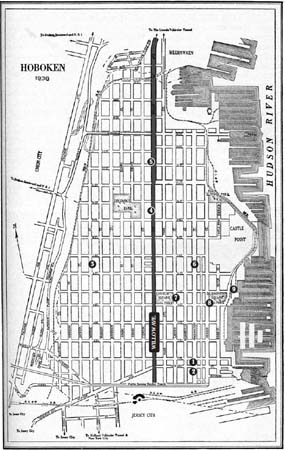
FEBRUARY 25, 1938CITY HALL, HOBOKEN, NEW JERSEYAROUND 10:15 AM
THE METAL SPIKE, PROPELLED with weight and force, punctured the poormasters striped dress shirt at center chest, slicing through his undervest. It tore through downy chest hair and age-toughened skin, the accumulated fat of years, cut through membrane to pierce muscle. The skewer punctured bone; with great velocity it clipped through the cage meant to protect the heart and lungs. The spike tip continued, lancing the sac enclosing Harry Barcks heart, and then, with its sudden, sharp withdrawal, ripped a jagged hole in his aorta.
Now the swift gush of blood could not be routed but flooded into the gap between Barcks flailing heart and its fibrous sheath. Blood rushed and pooled inside the girdling case, pounding the contained muscle, desperate to work and failing.
This was the deadly sequence determined at autopsy, for the bodys exterior had displayed little of the violence the medical examiners later found within. The puncture wound to Barcks chest, an eighth of an inch in diameter, had issued virtually no blood. But inside, the doctors discovered the cause of the poormasters death: the massing force of his own blood had compressed his heart and choked it, until its beating ceased.
WAITING FOR NOTHING
THE MORNING THE POORMASTER was killed, twenty-three men and women were waiting for him outside his office. Just a few weeks earlier, a nationwide recession had returned them to the desperation of the Depressions early days, when millions had been forced to scavenge for scraps of food. Grim, already exhausted despite the hour, they lined the reception room and the walls of the narrow adjoining hallway. They waited to plead with Harry Barck for some bread tickets, or a check for a few dollars. Their spouses and children waited, too, on the other side of town from city hall, in tenement rooms gone cold and dark through unpaid bills.
The poormaster made quick work of the line that morning. In fewer than fifteen minutes he had dismissed six aid-seekers, not even bothering to fill in the section on his printed Relief Client list that called for the number of relatives dependent on each interviewee. Next case! the waiting men and women heard him shout each time his door was opened by a rejected applicant. Next!
Around 9:30, at the sound of the interior door suddenly yanked ajar, sixteen men and women turned their heads expectantly, listening for the seventy-four-year-old poormasters customary dismissal of the last applicant and his summoning of the next. Instead, there was a womans indistinguishable shouting and the huffing sound of someone moving quickly. Young, dark-haired Lena Fusco rushed from Barcks inner office
Lock her up! Barck ordered Carmody, who grabbed Fuscos elbow as she swore in an Italian dialect he didnt understand. The elderly poormasters face was colored with anger, and flecks of the womans spit were splattered on his tweed suit. He had removed his round, wire-frame glasses. Take her out! he demanded. Then he added, starkly, I wont give her any more [bread] tickets.

View of the poormasters private office from the waiting room, showing the secretarys desk. Forensic photograph taken by a police photographer on February 25, 1938, following the killing of Poormaster Barck.
From the case file State v. Joseph F. Scutellaro,




